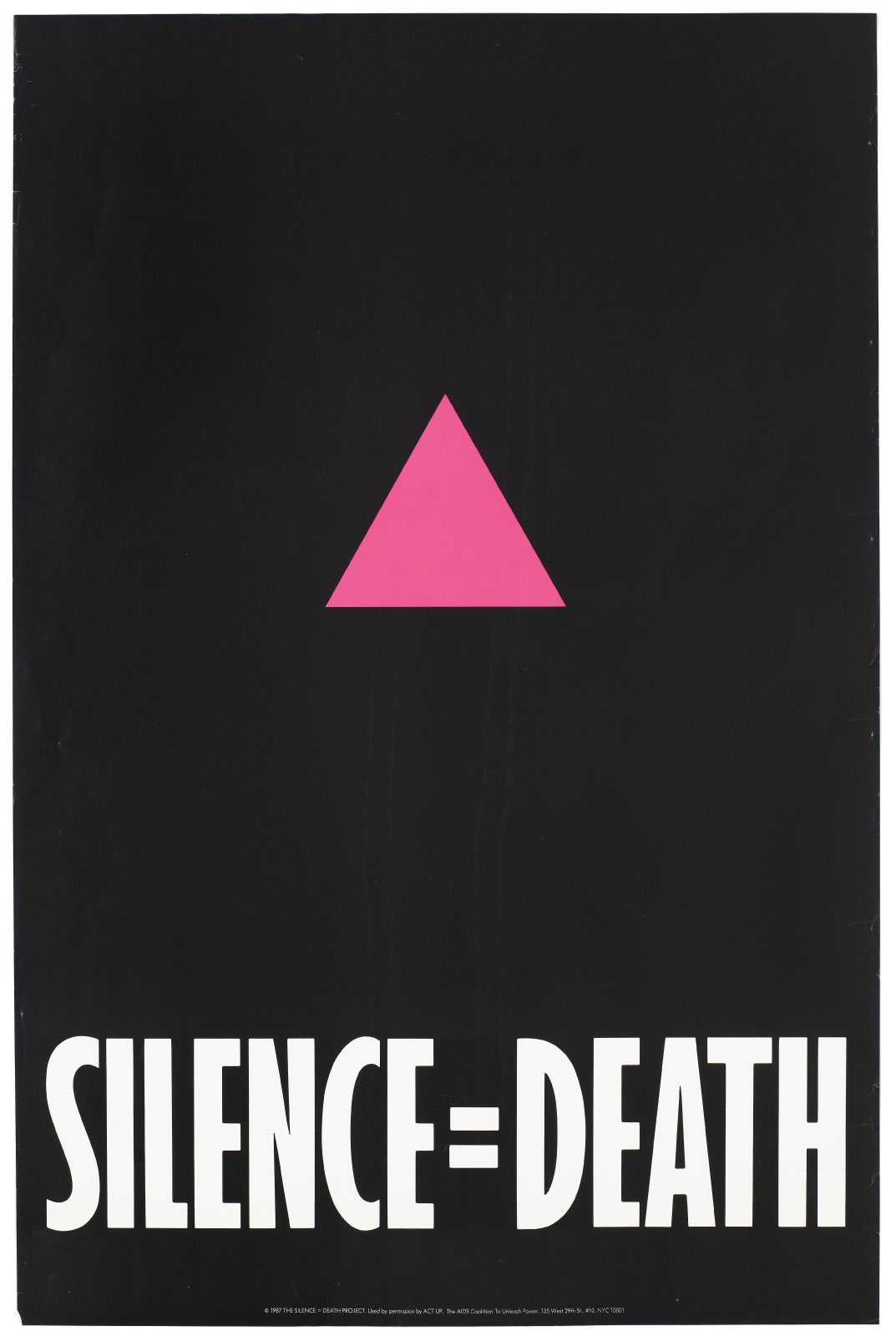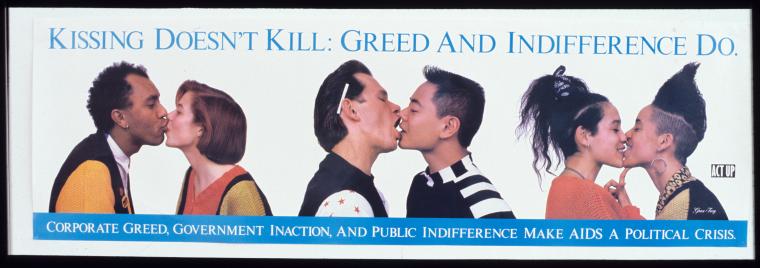Marketing is an industry rich in diversity. It’s a field where experimentation, new perspectives, and bold ideas drive success and innovation. However, the value of diversity hasn’t always been appreciated throughout marketing history, there are plenty of unsung marketing pioneers whose innovations didn’t get the fanfare they deserve.
This June, Pride Month reminds us to celebrate diversity. At GreenCup Digital, we want to do just that by highlighting the important marketing history work these underrepresented marketing innovators have done in the LGBTQIA+ community and beyond. Join us as we explore their stories, the innovations they drove back then, and the lessons they still teach us today.
The Marketing History of Gran Fury
During the height of the AIDS crisis in the 1980s, misinformation about the disease (and the people it affected) was rampant. It was against this backdrop that a group of LGBTQIA+ artists formed a collective known as Gran Fury to launch a public awareness campaign meant to raise awareness about HIV transmission and prevention.
Made up of founding members Richard Elovich, Avram Finkelstein, Amy Heard, Tom Kalin, John Lindell, Loring McAlpin, Marlene McCarty, Donald Moffett, Michael Nesline, Mark Simpson, and Robert Vazquez-Pacheco, Gran Fury took a bold new approach to this marketing campaign: marrying creative expression to fundamental marketing principles.
In addressing the stigmatization of gay men and women during the AIDS epidemic, they understood that to capture attention and change minds, the content needed to be as engaging as it was informative. They used established marketing best practices, like clear, concise messaging and calls to action, coupled with interesting, emotionally provocative designs.
One of their most famous pieces, the “Kissing Doesn’t Kill: Greed and Indifference Do” campaign, showcased straight and gay couples kissing in a vibrant, eye-catching poster. Another of their campaigns, “Silence = Death,” featured a simple pink triangle above the striking tagline. It blurred the lines between an art exhibit and a marketing campaign, eventually becoming so popular that it essentially branded the AIDS activism movement.


cite web | url=https://digitalcollections.nypl.org/items/510d47e4-1020-a3d9-e040-e00a18064a99 | title= (still image) Kissing Doesn’t Kill (With additional text: “Corporate greed, government inaction, and public indifference make AIDS a political crisis.”), (1987 – 1995)|author=Digital Collections, The New York Public Library |accessdate=June 3, 2024 |publisher=The New York Public Library, Astor, Lenox, and Tilden Foundations
OPart of what made these campaigns so successful is how they were defined by authenticity. As members of the LGBTQIA+ community, Gran Fury members had a personal connection to the message they were trying to market. Every ad was an authentic expression of the group’s desire to make a meaningful impact in securing support for those affected by the AIDS epidemic. Their messaging resonated with people of a similar mindset, and their imagery came to define AIDS activism of the 80s and 90s.
Gran Fury’s success helped cement authenticity and personal expression as marketing values that still resonate today. They laid the groundwork for later marketing campaigns that used creativity to provoke a sentimental, emotional response, demonstrating how the most impactful messages are those that speak from the heart.
Tom Burrell’s Experience
In the 1960s, advertising, like pretty much everything else, was dominated by white executives. As you can imagine, that made it difficult for advertisers to reach Black customers effectively. Part of the problem was that these advertisers were trying to market to all potential customers using the same messaging, and they couldn’t understand why their ads weren’t resonating with Black audiences (imagine that).
Enter Tom Burrell, who succinctly diagnosed the issue with his now-famous quote, “Black people are not dark-skinned white people.”
What Tom was getting at was that the Black audience was not merely a subset of the general market but a distinct group with their own values, experiences, and aspirations. In 1971, he founded Burrell McBain Advertising and began a targeted marketing campaign, developing unique ad messaging designed to capture a specific market segment. Targeted marketing wasn’t a completely new concept, but Tom took it to another level by incorporating music, art, and language that spoke specifically to his audience. In doing so, he alienated the market he wasn’t trying to reach but captivated the audience he was.
Tom’s work showed that you don’t have to reach everyone to be successful. Once you segment the market you want to focus on and learn to speak to their values and interests, it’s ok to prioritize your target market at the cost of a general audience.
Marketing History Of Sara Sunshine
Did you know that nearly one-fifth of Americans identify as Latino or Hispanic? Well, until the late 1960s, American advertisers certainly didn’t. At the time, the Hispanic market in the United States was growing rapidly but was still largely overlooked by mainstream advertisers. Unlike in the case of Tom Burrell, who helped white marketers reach an audience they were actively pursuing, marketers weren’t all that interested in reaching Hispanic consumers beyond translating existing ads into Spanish (and doing so very poorly, we should say).
Then, in 1962, the United States got its first-ever Hispanic marketing agency, Spanish Advertising and Marketing Services, co-founded by Sara Sunshine made marketing history. Sara, a Cuban immigrant, became extremely prolific in her field, not just because she was Latina herself – her success was a product of her dedication to market research. Before Sara appeared on the scene, no one had bothered to try to understand the Hispanic market. By contrast, Sara was known to spend hours wandering the streets of New York, visiting local bodegas and talking to the owners and customers. She wanted to understand their wants, habits, and local shopping trends. Understanding your audience – what a novel concept!
Sara earned a Clio award for pioneering Hispanic advertising as a distinct and valuable field in U.S. marketing, but the principles that drove her work weren’t limited to the Hispanic market. She showed that when you speak to people in a way that resonates with their experiences and needs, you don’t just capture their attention—you earn their loyalty. However, to do that, you have to spend time learning to speak the language of your audience (especially if that language is Spanish).
Marketing history is full of stories like these, of underrepresented voices shaping the future of marketing and advertising in ways that still resonate today. As we continue to drive the industry forward, it’s important to remember those who laid the groundwork for our modern marketing practices, especially those from marginalized groups. They may not have gotten the recognition they deserved in their time, but we owe much of our success as an industry to them!




